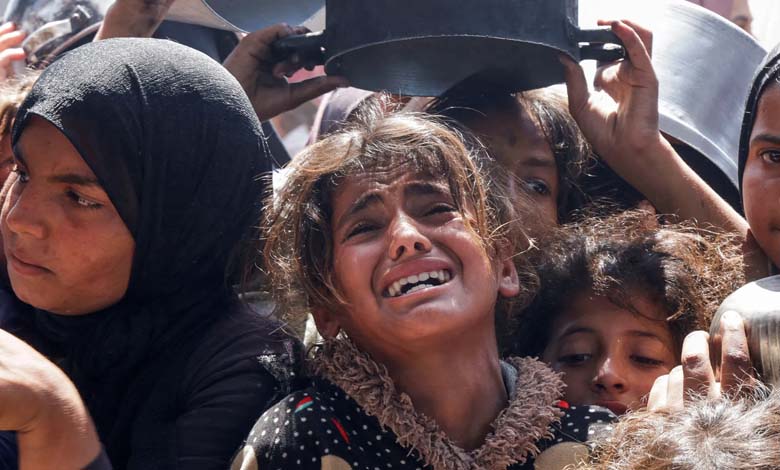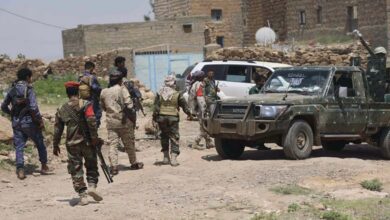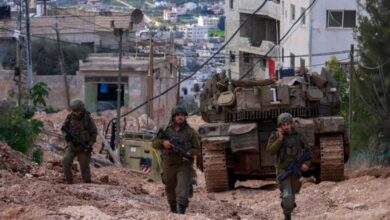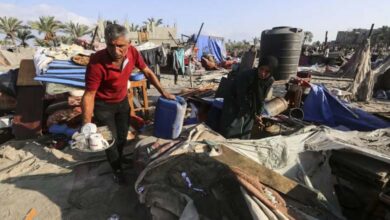After the Chaos of the First Distribution… Will the New Aid Mechanism in Gaza Hold?

When siege, hunger, and despair converge, scenes of chaos can only be seen as the cry of a people facing death at the gates of aid.
On Tuesday, chaos erupted at a food distribution site in Gaza run by a U.S.-backed organization, as thousands of desperate Palestinians rushed in to receive supplies.
-
Did the Gaza Truce Falter Over a Handshake? Details of the Rejected Proposal
-
Gaza Aid: Sudden Resignation of Director of the New Mechanism
The Israeli blockade on humanitarian aid, ongoing for over 11 weeks, has pushed Gaza’s population of over two million towards starvation and a worsening humanitarian crisis. Last week marked the first resumption of aid delivery to the besieged enclave.
Video footage from the distribution site in Tel al-Sultan, managed by the Gaza Humanitarian Foundation (GHF), showed massive crowds overwhelming the facilities, tearing down fences, and climbing over barriers meant to control the crowd.
-
War in Gaza: Intensified Israeli Strikes and Rocket Response
-
U.S.-Backed Gaza Aid Plan Rejected by the United Nations
A Journey of Suffering for Empty Stomachs
Speaking to CNN, Wafiq Qudeih, who came hoping to receive aid, said: “They want order, but there won’t be order — these are desperate people who want food and water.”
Eyewitnesses said Israeli soldiers fired shots into the air, forcing American contractors and their staff to withdraw, making it impossible to distribute aid.
Several residents expressed gratitude for the food received, but also spoke of walking long distances to reach the site, standing in line for hours, and dealing with chaos.
-
“Enough”: A Palestinian Cry from Gaza
-
Israeli escalation on Gaza 33 Palestinians killed including children in overnight airstrikes
One person said, “The place is very far, and we suffered to get here. I’m exhausted. How can they feed all these people? There are too many; security cannot control everyone.”
A diplomatic source told CNN the chaos was “not a surprise to anyone.”
The Gaza Humanitarian Foundation acknowledged the disorder, stating that its team pulled back to allow a small number of Palestinians to receive aid safely, “in line with protocol to avoid injuries.”
-
Political Analyst: Gaza Faces a Slow Death Amid Disgraceful International Silence
-
Mass Displacement and Annexation Threats: The West Bank Faces a Gaza-Like Scenario
Aid Resumes
A security source confirmed that U.S. security contractors on the ground did not fire any bullets and that operations would resume at the site on Wednesday.
The Israeli army said its forces had fired warning shots outside the compound and that the situation was under control. It denied firing directly at the site.
Amjad al-Shawa, director of the Palestinian NGO Network, warned of a “major failure.”
“If Israel believes that this blockade and starvation — which violate humanitarian principles — will help distribute aid, it is mistaken,” he said.
-
We Don’t Want to Hear the Word Evacuation: Gaza Voices Stand Against Displacement Plans
-
Survey Reveals Scale of Discontent and Anger Towards Hamas in Gaza
What Was Distributed on the “Chaos Day”
GHF reported distributing around 8,000 food boxes, amounting to 462,000 meals in Gaza so far.
They noted that the number of meals would increase daily, with a goal of reaching 1.2 million people — or 60% of Gaza’s population — by the end of the week.
While operations began Monday, published photos showed only a few people carrying boxes, with most crates left on pallets in an empty area.
-
Israel Moves to Expand Military Operations in Gaza
-
Gaza Crisis: Agreement on an Independent Committee and Security Training in Cairo
Distribution Centers… and the North Left Out
GHF is preparing three more aid distribution sites: two in southern Gaza and one in the central area.
All southern sites are in areas that received full evacuation orders just a day prior.
There are no distribution centers in northern Gaza — a major concern for aid experts. The UN previously warned that locating the initial sites only in southern and central Gaza might be seen as reinforcing Israel’s declared aim of forcing “all Gaza residents” to leave the north, as stated by Defense Minister Yoav Gallant earlier this month.
-
Relentless Bombardment and Daily Evacuation Warnings: Gaza Bleeds in Blood and Geography
-
More than Half of Gaza under Netanyahu’s Control… Morag Encircles Rafah to ‘Strangle’ Hamas
An Israeli military official told CNN earlier this week that Israel plans to occupy 75% of Gaza within two months as part of its renewed assault.
If carried out, the plan would displace over two million Palestinians into just one-quarter of the already devastated coastal strip, nearly surrounded by Israeli forces.
Prime Minister Benjamin Netanyahu has previously declared that all residents would be relocated to southern Gaza.
-
The Rafah Brigade Remains a Military Challenge for the Israeli Army in Gaza
-
48 Hours… Hamas Sets Deadline to Respond to Gaza Truce Proposal
The UN Has a Plan
UN spokesperson Stéphane Dujarric described footage of thousands of Palestinians storming a distribution site as “heartbreaking.”
“We and our partners have a detailed, principled, and operationally sound plan — supported by Member States — to deliver aid to those in need,” he told reporters.
He added, “We continue to stress that a meaningful scale-up of humanitarian operations is essential to prevent famine and meet the needs of all civilians, wherever they are.”











